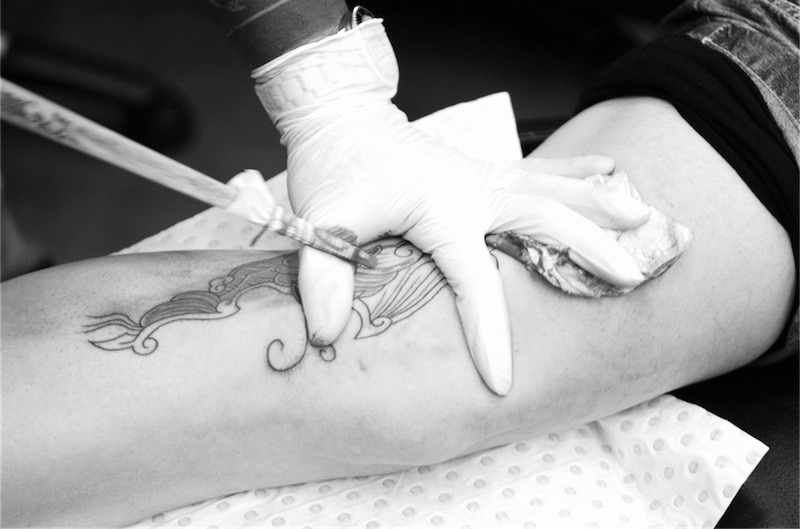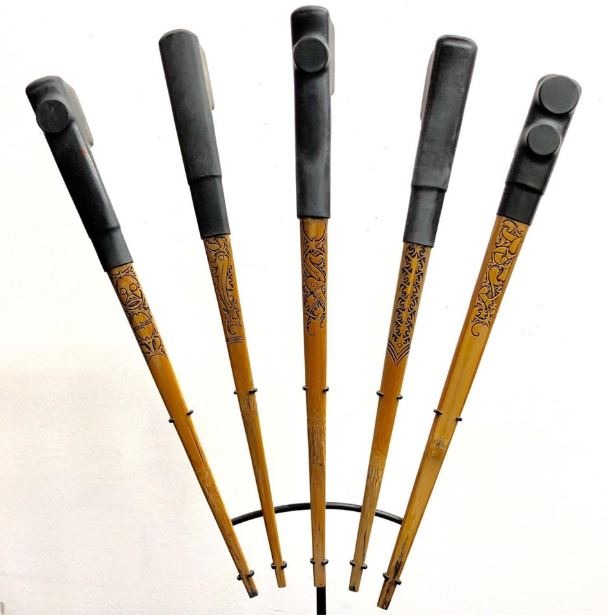Tebori tattooing technique is an ancient Japanese hand tattooing technique, and exploring this tebori technique can offer unique cultural insights. The tattoo artist, unlike a modern one, uses his hands instead of a machine. The tattoos are designed using a rod of metal or wood, dotted with an array of needles on the one end. It is a time-consuming method but continues to be the choice for local Japanese people and foreigners alike. Though mastering and implementing the art, it takes years of hard work.

Tebori Tattooing: Japan’s Ancient and Rare Art of Hand Tattooing
If you’re seeking a tattoo that not only reflects deep-rooted cultural heritage but also delivers unmatched craftsmanship, the Tebori tattoo technique is one of the most authentic and revered forms of Japanese tattooing. Unlike modern methods using electric machines, Tebori tattoos are created entirely by hand—using a wooden or metal rod fitted with multiple needles at one end.
This time-honored method has its roots in Japan’s Edo period (1603–1868) and remains a rare and sacred practice carried forward by only a select group of skilled tattoo artists, like Marc Pinto of Primitive Tattoo. Employing the tebori technique allows these artists to maintain the cultural significance and authenticity.
What Is Tebori?
The word Tebori (手彫り) literally translates to “to carve by hand.” It’s a slow, deliberate, and meditative process. The tattoo artist uses rhythmic hand pressure to insert ink beneath the skin. Unlike the buzz of a machine, Tebori is quiet and deeply personal.
Mastering Tebori takes years of dedicated practice and discipline, as understanding the tebori technique involves learning the technical skill of applying the ink. Artists not only learn the technical skill of applying the ink but also immerse themselves in the symbolism of traditional Japanese tattoos — from koi fish and dragons to samurai and cherry blossoms.
The Cultural Significance of Tebori in Japan
Traditional Japanese tattoos, known as Irezumi, have long carried deep symbolic meaning. They are often large-scale works covering the back, arms, and legs — reflecting protection, bravery, and inner strength. In this way, the tebori technique enhances the cultural value of these artworks.
Even though many modern artists in Japan and abroad now use electric machines, Tebori remains a symbol of authenticity in Japanese body art. It’s not just a tattoo—it’s a piece of living history.
Some artists, including Marc Pinto, use a hybrid approach: outlining the design with a machine and finishing with Tebori for colour and shading. This offers the beauty of traditional Japanese tattooing while reducing time and discomfort.
Why Choose Tebori?
Here’s why tattoo enthusiasts from around the world choose the Tebori method:
- Cultural Value: You are participating in an art form dating back hundreds of years.
- Unique Finish: Tebori tattoos often appear smoother and more vibrant than machine-done work.
- Healing Process: Many report that Tebori tattoos heal faster and with less trauma to the skin.
- Exclusivity: Few studios offer authentic Tebori worldwide, making it a rare and respected style.
Tebori at Primitive Tattoo, Perth
Marc Pinto of Primitive Tattoo Perth is one of the few artists outside Japan trained in authentic Tebori technique. Having studied with Japanese masters, Marc brings this unique art form to Western Australia.
📍 Learn more about Primitive’s Tebori and hand-poked tattoos and why this tebori technique continues to attract collectors, travelers, and tattoo enthusiasts looking for meaning beyond the ink.
Final Thoughts: Is Tebori Right for You?
Tebori tattoos are more than a design—they’re a personal journey. If you’re looking for a tattoo that tells a deeper story, reflects ancient artistry, and carries cultural gravitas, then the tebori technique might be your perfect match.
🔗 Book a consultation with Primitive Tattoo and explore this rare opportunity to get inked with the traditional Japanese Tebori technique.

